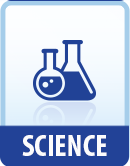|
This section contains 244 words (approx. 1 page at 300 words per page) |
World of Scientific Discovery on Dmitri Iosifovich Ivanovsky
Ivanovsky, the son of a landowner, was born in Gdov, Russia. He attended the Gymnasium of Gdov and later graduated as a gold medalist from the Gymnasium of St. Petersburg in 1883.
At the University of St. Petersburg, he enrolled in the natural science department and studied under several prominent Russian scientists. While a student, he became interested in diseases that destroy tobacco plants. He graduated in 1888 after presenting his thesis "On Two Diseases of Tobacco Plants."
The following year, he was asked by the directors of the Department of Agriculture to study a new tobacco disease, called tobacco mosaic, that had afflicted plants in the Crimean region. He crushed the infected leaves, which were distinguished by their mosaic pattern, into sap and forced the material through a Chamberland bacterial filter that was known to remove all bacteria. Despite following this procedure, the sap, when brushed on the leaves of healthy plants, was still toxic enough to cause disease. Ivanovsky's 1892 report on the tobacco mosaic disease detailed what he maintained must be an agent smaller than bacteria. It was the first study in which factual evidence was offered concerning the existence of this new kind of infectious pathogen.
Ivanovsky's work was ignored by the scientific community, and he eventually abandoned his study of this pathogen without understanding the implications of his research. The Dutch botanist Martinus Willem Beijerinck repeated Ivanovsky's experiments with this new pathogenic source, giving it the name filterable virus in 1898.
|
This section contains 244 words (approx. 1 page at 300 words per page) |


